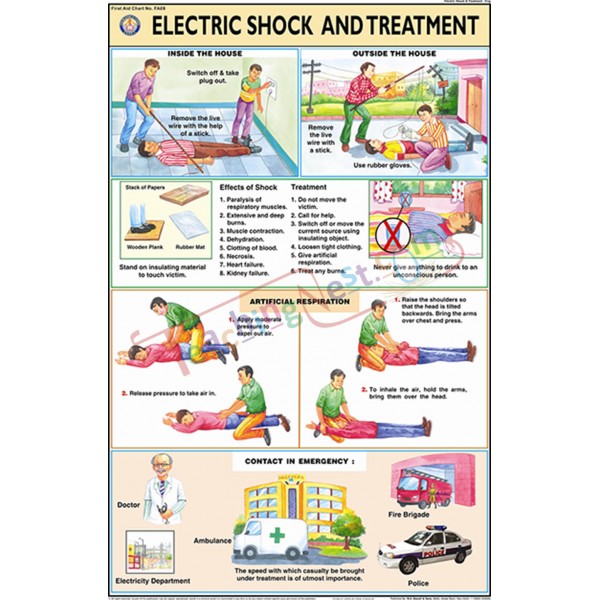First Aid Information for Electric Shock
The danger from an electrical shock depends on the type of current, how high the voltage is, how the current traveled through the body, the person's overall health and how quickly the person is treated.
An electrical shock may cause burns, or it may leave no visible mark on the skin. In either case, an electrical current passing through the body can cause internal damage, cardiac arrest or other injury. Under certain circumstances, even a small amount of electricity can be fatal.
When to contact your doctor
A person who has been injured by contact with electricity should be seen by a doctor.

Caution
- Don't touch the injured person if he or she is still in contact with the electrical current.
- Call local emergency number if the source of the burn is a high-voltage wire or lightning. Don't get near high-voltage wires until the power is turned off. Overhead power lines usually aren't insulated. Stay at least 20 feet (about 6 meters) away — farther if wires are jumping and sparking.
- Don't move a person with an electrical injury unless he or she is in immediate danger.
When to seek emergency care
Call local emergency number if the injured person experiences:
- Severe burns
- Confusion
- Difficulty breathing
- Heart rhythm problems (arrhythmias)
- Cardiac arrest
- Muscle pain and contractions
- Seizures
- Loss of consciousness
1. Separate the Person From Current's Source
To turn off power:
- Unplug an appliance if plug is undamaged or shut off power via circuit breaker, fuse box, or outside switch.
If you can't turn off power:
- Stand on something dry and non-conductive, such as dry newspapers, telephone book, or wooden board.
- Try to separate the person from current using non-conductive object such as wooden or plastic broom handle, chair, or rubber doormat.
If high voltage lines are involved:
- The local power company must shut them off.
- Do not try to separate the person from current if you feel a tingling sensation in your legs and lower body. Hop on one foot to a safe place where you can wait for lines to be disconnected.
- If a power line falls on a car, instruct the passengers to stay inside unless explosion or fire threatens.
2. Do CPR, if Necessary
When you can safely touch the person, do CPR if the person is not breathing or does not have a pulse.

3. Check for Other Injuries
- If the person is bleeding, apply pressure and elevate the wound if it's in an arm or leg.
- There may be a fracture if the shock caused the person to fall.
- Look for burns.
4. Follow Up
- A doctor will check the person for burns,fractures,dislocations,and other injuries.
- An ECG, blood tests, CT scan or MRI may be necessary.
- The person may be admitted to the hospital or a burn center.